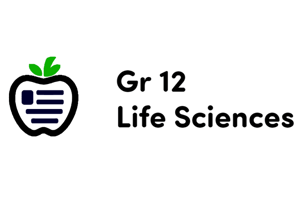Podcast
Questions and Answers
Which of the following is a physical barrier in plants?
Which of the following is a physical barrier in plants?
- Lysozymes
- Bacteria
- Defensins
- Thick bark (correct)
Microbiota refers to pathogenic bacteria that can enhance infection.
Microbiota refers to pathogenic bacteria that can enhance infection.
False (B)
What role do chemicals like lysozymes play in animal defense mechanisms?
What role do chemicals like lysozymes play in animal defense mechanisms?
They inhibit the growth or development of pathogens.
The presence of ______ on the skin helps prevent the colonization of harmful microorganisms.
The presence of ______ on the skin helps prevent the colonization of harmful microorganisms.
Match the following barriers to their type:
Match the following barriers to their type:
Which type of immunity is provided by the transfer of antibodies from mother to baby through breastfeeding?
Which type of immunity is provided by the transfer of antibodies from mother to baby through breastfeeding?
Passive immunity results in long-term immunological memory.
Passive immunity results in long-term immunological memory.
What is the effect of antibodies transferred through artificial passive immunity?
What is the effect of antibodies transferred through artificial passive immunity?
Natural active immunity is developed through exposure to a ______.
Natural active immunity is developed through exposure to a ______.
Match the following terms with their descriptions:
Match the following terms with their descriptions:
Flashcards are hidden until you start studying
Study Notes
Physical Barriers
- Physical barriers prevent entry of pathogens, acting as a first line of defense.
- Plants have various physical barriers like thick bark, waxy cuticles, thorns, and galls.
- Animals rely on intact skin, mucous secretions, cilia, and closing of stomata to block pathogens.
- Some examples include the production of gum to seal wounds and the trapping of pathogens by cilia.
Chemical Barriers
- Chemical barriers inhibit the growth or development of pathogens by releasing toxins and enzymes.
- Plant chemical defenses include defensins, tannins, and chitinases.
- Animals utilize lysozymes in tears and saliva, stomach acid, earwax, and acidic sweat to ward off pathogens.
Microbiota Barriers
- The presence of non-pathogenic bacteria, known as normal flora or microbiota, prevents the growth and colonization of harmful microorganisms.
- Microbiota can be found on skin, in the lower gastrointestinal tract, and the vagina.
Passive Immunity
- Passive immunity is the transfer of antibodies produced by another organism, providing immediate but temporary protection.
- This type of immunity lacks immunological memory and the transferred antibodies degrade over time.
- Natural passive immunity occurs through the placenta during pregnancy or breast milk after birth, providing protection for a few weeks or months.
- Artificial passive immunity involves the injection of antibody-containing serum, where antibodies bind to pathogen antigens and form an antigen-antibody complex, neutralizing the pathogen before it causes significant damage. Examples include snake antivenom.
Active Immunity
- Active immunity develops through natural exposure to a pathogen or artificial introduction of antigens.
- Natural active immunity arises from exposure to a pathogen, triggering the adaptive immune response and generating memory cells.
- These memory cells provide a rapid and robust secondary response upon subsequent exposure to the same antigen, minimizing disease severity.
- Artificial active immunity is achieved through vaccination, where weakened or inactivated pathogens are administered to stimulate the immune system.
- Vaccines trigger the production of B memory cells, leading to faster and greater antibody production upon further exposure.
- Booster vaccines further stimulate memory cell production, enhancing the immune response and providing longer-lasting immunity.
Herd Immunity
- Herd immunity occurs when a significant proportion of the community is immune, protecting vulnerable individuals who may not be vaccinated.
- This reduces the number of infected individuals, limiting disease spread and reducing the likelihood of infection for unvaccinated populations.
Immunotherapy
- Immunotherapy uses a variety of treatments to modify the immune system’s function.
- Activation immunotherapies aim to stimulate or amplify the immune response, often used in cancer treatment.
- Suppression immunotherapies aim to prevent or reduce the immune response, used for autoimmune diseases.
- Monoclonal antibodies are used in immunotherapy to either stimulate, suppress, or have no effect on the immune response.
- These antibodies can bind to inflammatory cytokines, reducing excessive inflammation in autoimmune diseases and preventing tissue damage.
- Monoclonal antibodies can also target autoreactive B and T cells, inhibiting their activity or stimulating other immune cells to destroy them.
Emergence of Pathogens
- The emergence of new pathogens and the re-emergence of known pathogens can have significant global impact.
- Disease outbreaks are categorized based on geographic spread:
- Epidemic: a sudden increase in disease incidence above the expected rate for a specific area.
- Pandemic: a global or geographically widespread disease outbreak.
- Endemic: the constant presence and/or usual prevalence of a disease in a specific geographic area.
- Emerging diseases are infectious diseases appearing in a population for the first time or rapidly increasing in incidence or geographic range.
- Re-emerging diseases are previously controlled infectious diseases showing an upswing in incidence.
Pathogen Transmission
- Modes of transmission are important for controlling disease spread.
- Direct transmission involves direct contact between infected and susceptible individuals.
- Indirect transmission includes vector-borne transmission and airborne transmission.
Vector-borne Transmission
- Pathogens spread through vectors like mosquitoes, ticks, or other insects.
- Scientific control strategies include vector control (bed nets, insecticides), medications, and vaccine development.
- Social strategies involve education on prevention, like mosquito bite prevention (bed nets, insect repellents) and elimination of breeding sites.
- Examples of vector-borne diseases include malaria, yellow fever, dengue fever, and Zika virus.
Studying That Suits You
Use AI to generate personalized quizzes and flashcards to suit your learning preferences.




